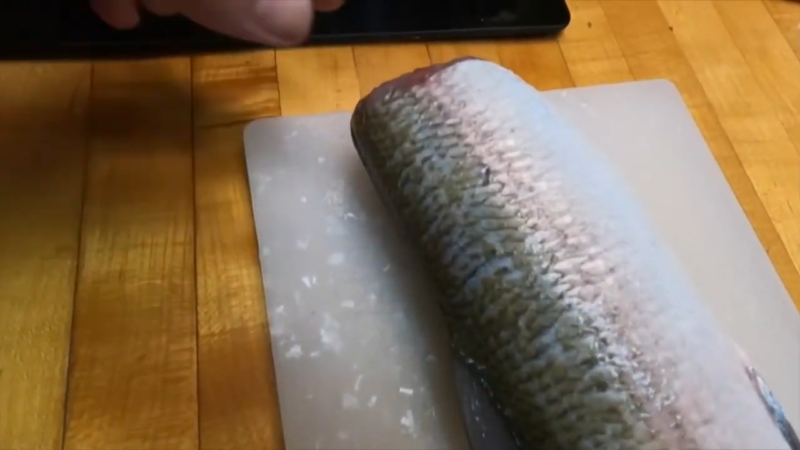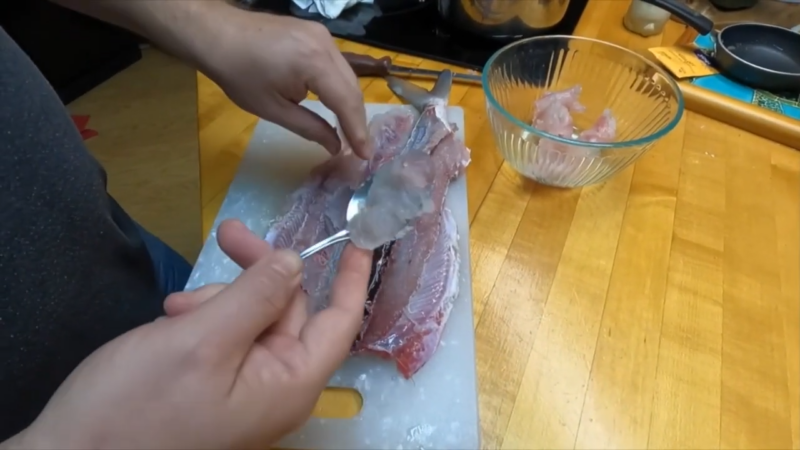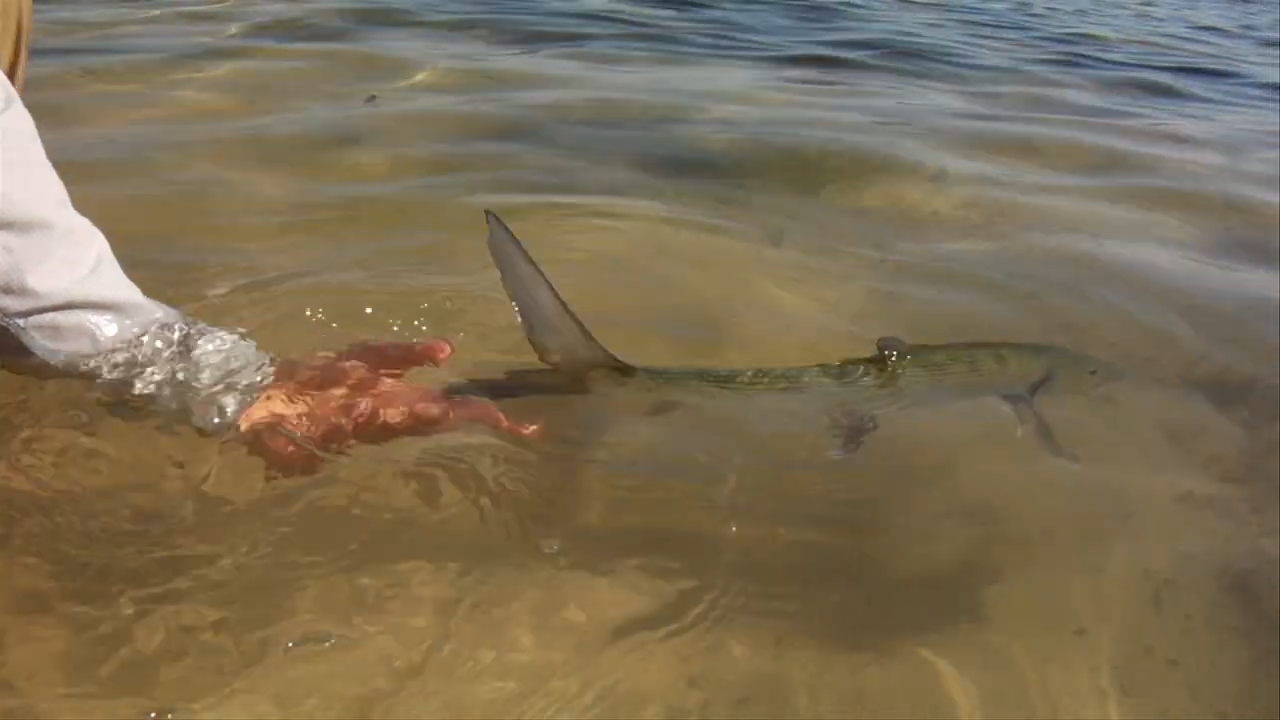To answer this question right away: yes, you can eat bonefish! Despite being prized for sport, bonefish are also considered a delicacy in various culinary circles. However, they are not as commonly found on restaurant menus or in grocery stores compared to other saltwater fish like snapper or grouper.
This rarity can make them a unique and sought-after choice for seafood enthusiasts.
Taste and Texture

Bonefish meat is described as delicate yet firm, with a subtle sweetness that absorbs marinades and seasonings beautifully. The flesh is flaky but holds together well during cooking, making it versatile for various culinary techniques. Some people compare the taste to other inshore species, like mullet or tarpon.
When cooked properly, bonefish offers a pleasant texture that isn’t overly dry or mushy. It’s perfect for dishes where the fish can shine, such as grilled fillets with a light seasoning or in more complex preparations like ceviche.
Why Are Bonefish Hard to Eat?
Bonefish have a very appropriate name—not only do they have bones, but they have a lot of them. Their body structure is packed with tiny, needle-like bones, making them notoriously difficult to fillet and eat. Unlike other fish, where you can easily debone or remove a few large bones after filleting, bonefish present a unique challenge.
Their bones are thin, fragile, and abundant, running through the flesh in a way that makes them tricky to separate from the meat. This intricate bone structure is the primary reason bonefish are not widely consumed, especially when there are so many other fish that are easier to prepare.
Methods of Preparation

If you’re determined to give bonefish a try, there are a few methods that can help make them more palatable:
| Method | Description | Benefits |
| Grinding or Mashing | Bonefish are mashed or ground into a paste-like consistency and often mixed with other ingredients to create dishes like fish cakes or spreads. | – Breaks down tiny bones, making them less noticeable – Versatile for various recipes – Creates smooth textures ideal for spreads and cakes |
| Smoking | Bonefish are slow-cooked through smoking, which helps soften the bones and infuses the fish with a rich, smoky flavor. | – Softens bones, reducing the risk of encountering them while eating – Enhances flavor with a deep, smoky taste – Extends shelf life through preservation |
| Pickling | Bonefish are preserved using vinegar and spices, which helps break down the bones and imparts a tangy, unique flavor to the fish. | – Softens bones, making them easier to eat – Preserves the fish for longer periods – Adds a distinctive tangy flavor that complements the fish |
Nutritional Value
Bonefish, like most fish, are rich in protein, vitamins, and minerals. They offer a healthy dose of omega-3 fatty acids, which are great for heart health, brain function, and overall wellness.
However, due to their small size and bone content, you’re not likely to consume a large quantity of bonefish in one sitting—so while they are nutritious, the yield from a single fish isn’t substantial.
Another potential issue to be aware of is contamination, which can affect fish species in tropical waters. Bonefish, like other predatory fish, can sometimes contain high levels of mercury or other toxins, depending on their environment. This is especially a concern for those who consume large quantities of seafood regularly.
Health Risks and Considerations
One of the most significant considerations for eating bonefish is the risk of ciguatera poisoning. This type of foodborne illness occurs when toxins produced by certain types of algae accumulate in reef fish. Bonefish, particularly in tropical waters, can sometimes be carriers of this toxin.
What is Ciguatera Poisoning?
Ciguatera poisoning is caused by the consumption of fish that have ingested toxic algae. These toxins build up in the fish’s body over time and are not destroyed by cooking or freezing. Symptoms of ciguatera poisoning include nausea, vomiting, diarrhea, and, in more severe cases, neurological symptoms like tingling, itching, and a reversal of hot and cold sensations.
How to Avoid the Risk
If you’re considering eating bonefish, it’s important to be cautious. The best way to reduce the risk of ciguatera is to avoid consuming bonefish from areas known to have outbreaks of the toxin. You can also consult local fish and wildlife authorities for guidance on which areas are safe for harvesting fish.
However, no method is foolproof, and even seemingly safe fish can sometimes carry the toxin.
Alternatives to Bonefish
If bonefish are hard to find or you’re looking to try something different, several similar fish species offer comparable flavors and textures:
- Permit: Another popular game fish, permit has a firm texture and mild flavor, making it a great substitute in recipes.
- Tarpon: While tarpon is larger and less commonly eaten, smaller tarpon can be prepared similarly to bonefish.
- Snook: Snook offers a sweet, mild flavor with a flaky texture, suitable for grilling and other preparations.
- Pinfish: A smaller option, pinfish can be used in dishes requiring delicate fish with subtle flavors.
You Must Try These Recipes!
Grilled Bonefish
Ingredients:
- Bonefish fillets
- Olive oil
- Lemon juice
- Garlic, minced
- Fresh herbs (thyme, rosemary)
- Salt and pepper
Instructions:
- Marinate bonefish fillets in a mixture of olive oil, lemon juice, garlic, herbs, salt, and pepper for at least 30 minutes.
- Preheat the grill to medium-high heat.
- Grill the fillets for 4–5 minutes per side, or until the flesh is opaque and flakes easily with a fork.
- Serve with a squeeze of fresh lemon and a side of grilled vegetables.
Bonefish Ceviche
Ingredients:
- Fresh bonefish fillet, diced
- Lime juice
- Red onion, thinly sliced
- Jalapeño, seeded and minced
- Fresh cilantro, chopped
- Salt to taste
- Avocado slices (optional)
Instructions:
- In a bowl, combine the diced bonefish with enough lime juice to cover the fish. Let it marinate in the refrigerator for 2-3 hours until the fish appears “cooked.”
- Drain excess lime juice and add red onion, jalapeño, cilantro, and salt.
- Gently mix to combine and serve chilled, garnished with avocado slices if desired.
Bonefish Fry
Ingredients:
- Bonefish fillets
- All-purpose flour
- Cornmeal
- Paprika
- Garlic powder
- Salt and pepper
- Eggs, beaten
- Vegetable oil for frying
Instructions:
- Mix flour, cornmeal, paprika, garlic powder, salt, and pepper in a shallow dish.
- Dip bonefish fillets into beaten eggs, then dredge in the flour mixture, ensuring an even coating.
- Heat vegetable oil in a skillet over medium-high heat.
- Fry the fillets for 3-4 minutes per side until golden brown and crispy.
- Drain on paper towels and serve with tartar sauce or a squeeze of lemon.
To Wrap Things Up
Honestly, I never realized how versatile bonefish could be until I tried cooking them myself. Turning a hard-fought catch into a delicious meal was super rewarding and added a whole new layer to my fishing trips. Have you ever cooked your catch? Try it as soon as possible!

